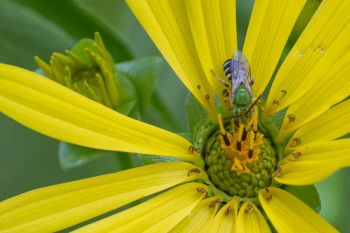
1. Location, location, location
To find the bees, look for the flowers: simple, open flowers like wild roses, geraniums, or anemones, or composite flowers like sunflowers and others in the Aster family, are attractive sources of nectar and pollen. Good bee spotting locations are those with flowers in large clusters and colours of white, yellow, pink and purple.

Another place to watch for bees is at their nests. Many native bees nest in the ground and the entrances look like a giant ant hill with a large round opening. These green metallic sweat bees, Agapostemon virescens, moved into LEAF’s Urban Demonstration Garden at Old Mill this summer, in a bare patch of sandy soil under a birch tree.
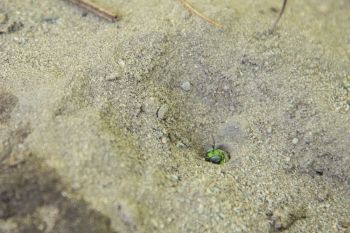
2. Patience pays off
Focus on the flowers at their level. Patience and stillness are rewarded, as soon all sorts of creatures will come into view. Twenty to thirty minutes at a time can bring several bee sightings. Try not to be distracted by all the wasps, flies, ants, beetles, butterflies…

Watch long enough and you’ll see a female bumble bee grooming herself with her forelegs. She is actually using the stiff bristles on her front legs to brush the pollen towards the pollen baskets on her hind limbs.

3. It’s all in the details
How to tell if it’s actually a bee? A few clues include the wings, eyes, and legs. Look for the bee’s two sets of wings. They are hooked together during flight, and usually folded underneath each other at other times. Also look for the three small, round simple eyes on top of the bee’s head, between the two compound eyes on the sides of the head.
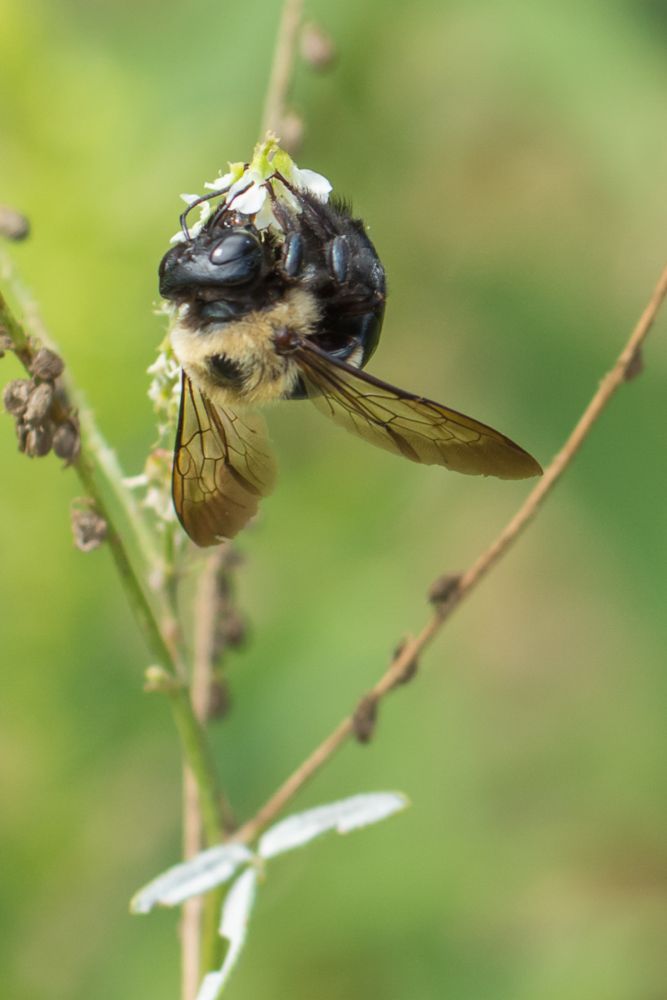
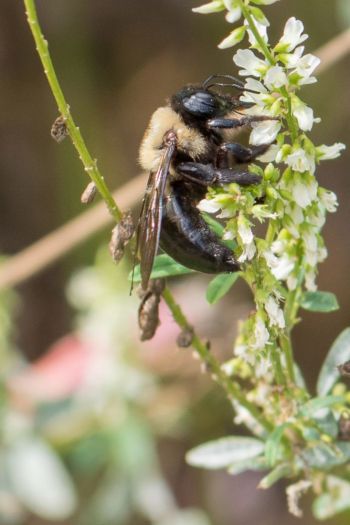
A bee’s six legs are usually thicker than a wasp’s or flies and hairier, especially the hind legs. Many bees also have hair on the underside of the abdomen, and then there are those, such as bumble bees, that are fuzzy all over.
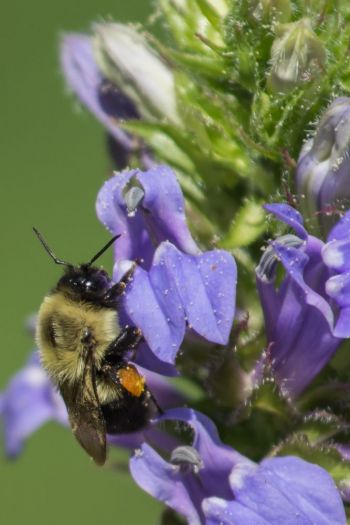
As some bees are even smaller than the pistil of the flower on which they feed, the only way to spot the identifying features is with a zoom or magnifying lens. I could just make out its simple eyes and hairy hind leg of this one in the weigela.
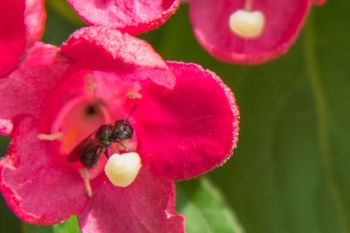
Fall flowers are starting to bloom, so there are still a couple months of bee activity - the watch continues!

Lillian Natalizio is a LEAF volunteer and amateur photographer with a particular interest in the texture, colour and movement of trees. A perpetual student, she really enjoyed switching focus to bees this summer.
Photos by Lillian Natalizio
LEAF’s work on native bees is supported by Ontario Power Generation. Learn more about the plight of native bees and how you can help at www.letitbee.com.
